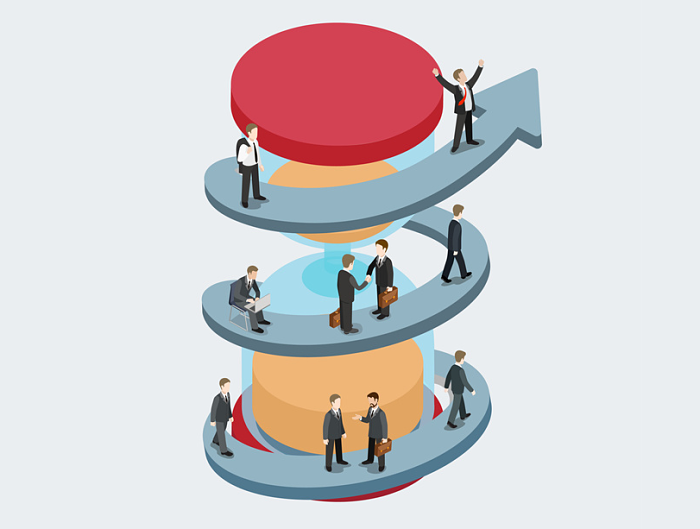Part 3 of 3
B2B companies might think that when they’ve reached the decision stage of the buyer’s journey, all that’s left is for their salespeople to close the deal. But inbound content is still relevant at this late stage, because prospects still may have questions after researching and considering their options.Playwright and writer David Mamet once defined dramatic structure as a series of three questions: “Who wants what from whom? Why now? And what happens if they don’t get it?” If you squint a little bit, you can apply that same theory to the buyer’s journey (which seems wholly appropriate for the writer of Glengarry Glen Ross):
- “Who wants what from whom” is the awareness stage. B2B prospect is looking for a solution to their problem and combing the internet for answers.
- “Why now” is the consideration stage. The prospect wants to find someone who provides a solution that best fits their particular needs.
- “What happens if they don’t get it” is sort of the inverse of the decision stage. prospect, now a nurtured lead, wants assurance that their decision is the best one and that the solution provides both short and long-term benefits.
Decision-stage content focuses on assurance and setting up a long, fruitful partnership between your company and the prospect. Here, the sales department certainly moves to the forefront of the action but marketing has to support sales with relevant offers, demonstrations and practical knowledge.
Your goal: to produce informative, highly-focused and forward-thinking content that isn’t redundant. Here’s how.

1. Define the benefits
When catering to prospects in the decision stage, you need to think about them in two ways: as a lead making a purchasing decision and as a future long-term customer. odel content around this transitionary definition of your sales-qualified leads, focusing on enumerating the benefits you can provide them.
Thought leadership content works well here when it focuses on the detailed applications of what you’re providing prospects. Get visual with videos and infographics as well—the former can give prospects helpful content on getting the most out of your product or service, and the latter effectively quantifying benefits in an appealing way.
Case studies and customer testimonials are particularly helpful here. Writing blog posts or creating videos that demonstrate your worth to prospects is effective, but not quite as much as third-party verification of that value. Statements from your current customers can help your leads on the verge of purchasing feel more confident in their decisions and learn new applications of your product or service.

2. Develop for a microaudience
A B2B buyer tends to have many decision-makers involved. Each brings different questions and needs to the table and each needs their own individual assurance to be on board with a purchase. Though their purchase may not require unanimous consent from the entire C-suite and all of management, it doesn’t hurt to aim for that.
Personas become extraordinarily important for your content in this stage. To focus on the needs of the CIO, operations manager or any other decision-maker in the process, you have to know the questions they’re likely to have and what answers will truly resonate with them. As with awareness stage content, you have to mine your past for insights.
Poll current customers on what their biggest challenges were heading into the decision stage and how you them helped overcome those issues. Ask for feedback on how your content and process helped assuage any concerns. And learn from your mistakes—look at failed conversions, compare them to successful ones and identify what went wrong to avoid them with future leads.
3. Earn the role of trusted advisor
The point of crafting inbound material focused on thought leadership is to position your company as an expert in the field. This helps to present a purchase from you as worthwhile and also begins building a deeper trust before a prospect commits.
Content we’ve talked about before—particularly case studies, industry commentary, and whitepapers—helps achieve this, but there’s also a need for transparency. Don’t be afraid to get a little ‘inside baseball’ with decision stage content, because that’s something B2B buyers on the verge of purchasing want. The more they know about how your solution works for them, the better you prevent surprises after the purchase is made. In turn, that helps prevent a negative initial experience from a new B2B customer.
Content for the B2B buyer’s journey is all about getting progressively more focused, nuanced, and personal. Remember that the buyer isn’t going through it alone—your content should feel like it is moving through the process alongside them, listening to their needs and offering timely answers relevant to the stage they’re in. A good B2B content strategy is dynamic, adjusting to what your ideal prospects look for. Buyers respond to content that speaks to them and the more intelligently your content speaks for you, the better your conversion rates become. ![]()







 By
By 